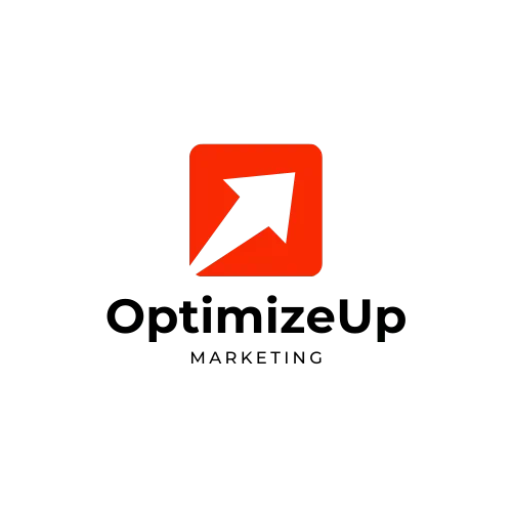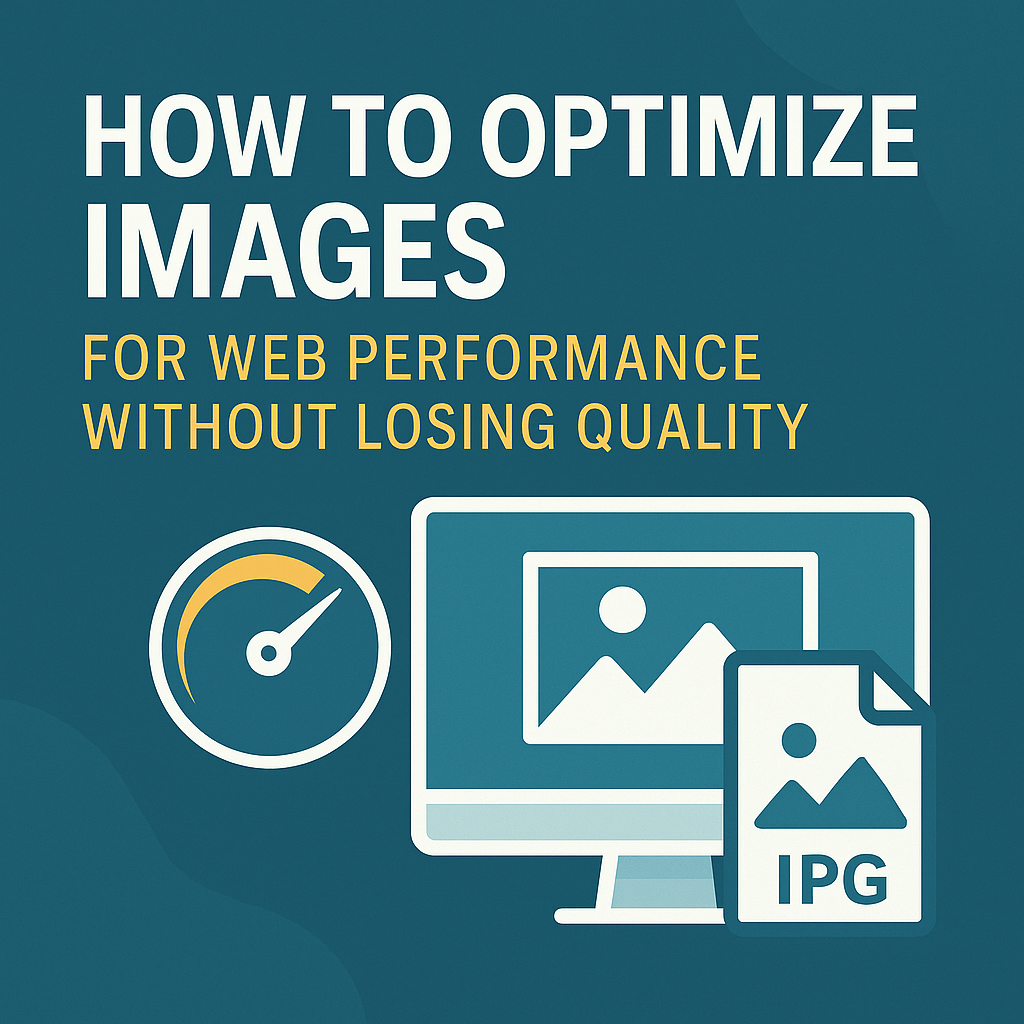Why Image Optimization Matters for Web Performance
Images often account for more than 50% of a webpage’s total weight. Unoptimized visuals can slow down page load times, impact user experience, and hurt search engine rankings.
Benefits of optimizing images for web include:
- Faster page load times
- Improved Core Web Vitals (especially Largest Contentful Paint)
- Enhanced mobile experience
- Reduced server bandwidth
- Higher search engine rankings
- Better retention and lower bounce rates
“A 1-second delay in load time can reduce conversions by 7%.” — Neil Patel
Key Principles of Image Optimization
1. Use the Right Image Format
Choosing the correct image format is foundational to reducing file size and improving load time:
- JPEG: Best for rich, colorful images like product photos.
- PNG: Preserves transparency and high detail; ideal for logos and diagrams.
- WebP: Delivers small file sizes with good quality; supported by most modern browsers.
- SVG: Perfect for vector graphics such as icons, UI elements, and illustrations.
- AVIF: The most compressed modern format; suitable for cutting-edge performance if browser support aligns.
2. Compress Without Losing Quality
Balance is key: compress enough to shrink file size while preserving necessary detail.
Compression types:
- Lossless: Keeps 100% of image detail (used for PNG, SVG).
- Lossy: Smartly removes unnoticeable data (used for JPEG, WebP).
Compression tools:
3. Resize Images to Display Size
- Don’t upload huge images only to resize them via CSS.
- Tools like Photoshop, GIMP, or Figma can resize to match container dimensions.
- Resize dynamically based on viewport or use the
srcsetattribute.
4. Serve Responsive Images
Load smaller images on mobile and higher-res ones on larger displays using HTML markup:
<picture>
<source srcset="hero-small.webp" media="(max-width: 768px)">
<source srcset="hero-large.webp" media="(min-width: 769px)">
<img src="hero-default.webp" alt="Optimized visual" loading="lazy">
</picture>5. Enable Lazy Loading
This prevents images from loading until needed, reducing initial page load size:
<img src="feature.jpg" alt="Product showcase" loading="lazy">Lazy loading should be the default behavior for content not immediately visible above the fold.
How Image Optimization Affects SEO and Core Web Vitals
Optimized images directly influence:
- Largest Contentful Paint (LCP): The time it takes for the biggest image element to render
- First Input Delay (FID): Improved load times free up browser resources for interactivity
- Cumulative Layout Shift (CLS): Proper sizing and placeholders prevent layout jumps
Search engines reward faster, smoother pages. Every second saved contributes to higher engagement and rankings.
Image Optimization Workflow for Web Projects
Step 1: Audit Your Existing Images
Use tools like:
- PageSpeed Insights
- GTmetrix
- WebPageTest
- Chrome DevTools’ Lighthouse Audit
Look for large images, outdated formats, and missing alt text.
Step 2: Convert to Efficient Formats
Use WebP or AVIF where supported, fallback to JPEG/PNG for older browsers. Convert using:
- Photoshop/Web export tools
- Squoosh or Sharp CLI
Step 3: Compress Files in Bulk
Compress all image assets using:
- Desktop tools like ImageOptim
- Plugins like TinyPNG Compressor for WordPress
- Online batch services like ShortPixel or Kraken.io
Step 4: Resize and Crop
- Maintain the aspect ratio
- Crop whitespace around icons or images to improve compression
Step 5: Implement CDN and Caching
- Serve images via global CDNs like Cloudflare, Cloudinary, or Bunny.net
- Set long
Cache-Controlheaders for static image files
Step 6: Add Descriptive ALT Text
Use meaningful, keyword-rich alt attributes to:
- Support SEO
- Ensure accessibility compliance (ADA/WCAG)
- Improve UX for screen readers
Step 7: Maintain Accessibility and UX
- Use
role="presentation"oraria-hidden="true"for decorative visuals - Ensure color contrast and image contrast meet accessibility standards
Advanced Tools and Automation Techniques
CMS & Platform Plugins
- WordPress: Smush, Imagify, EWWW, ShortPixel
- Shopify: TinyIMG, Crush.pics, Image Optimizer
- Magento: Image Clean, WebP Optimizer
CDN & Image APIs
- Cloudinary: Image delivery + transformation on-the-fly
- Imgix: Real-time optimization and resizing
- ImageKit: Optimizes and caches globally
Automation in Development
- Automate via
imagemin,gulp-imagemin,sharp, or Webpack loaders in CI/CD pipelines
Best Practices for Developers and Designers
- Export @1x, @2x, and @3x image sizes from design tools
- Set height and width in HTML to avoid CLS
- Strip unnecessary metadata (EXIF, GPS)
- Use SVG over PNG where practical
- Avoid inline base64 encoding unless critical
- Use
.webpas the default format for content and backgrounds
Real-World Examples of Image Optimization Impact
Case Study 1: E-commerce Store
- Homepage load time reduced from 5.8s to 1.9s
- Conversion rate improved by 19%
- Core Web Vitals scores moved from “Needs Improvement” to “Good”
Case Study 2: Portfolio Website
- WebP + lazy loading dropped image payload from 14MB to 2MB
- Google PageSpeed Insights score increased from 68 to 95
- Time-on-site doubled from 45s to 90s
Case Study 3: SaaS Landing Page
- PNG screenshots replaced with AVIF
- Mobile LCP reduced by 3.4 seconds
- Bounce rate dropped 20% in A/B test
Common Mistakes to Avoid
- Uploading camera-quality images without compression
- Using images to display text rather than HTML
- Forgetting to specify dimensions in the
<img>tag - Not testing responsiveness across devices
- Hosting uncompressed images on slow servers
How Optimized Up Helps You Streamline Image Performance
At Optimized Up, we:
- Conduct image and performance audits
- Replace bloated media with optimized formats
- Implement automation in your deployment pipeline
- Build custom workflows for scalable image optimization
- Enhance site speed and SEO by tackling media bloat
Reach out now to scale your performance with a smarter media strategy.
Frequently Asked Questions
WebP or AVIF. JPEG is okay for backwards compatibility, but heavier.
Yes, unless the image is above-the-fold and crucial to LCP.
Not noticeably if you use high-quality compression tools with visual preview.
Use Google PageSpeed, GTmetrix, or Lighthouse. Check size, format, and compression.
Indirectly, yes. Faster images = faster pages = better rankings.
At least quarterly or during each major redesign or content upload.
MLA Citations:
Baker, Vanessa. Web Performance Mastery: Image Optimization Strategies for Developers. EdgeStack Publishing, 2024. “Improve Page Speed with Better Image Practices.” Google Developers, 2024, web.dev. “Optimize Images for the Web: Tools & Tips.” Smashing Magazine, 2024, www.smashingmagazine.com. “Impact of Load Time on Conversion Rates.” Neil Patel Blog, 2024, neilpatel.com.





